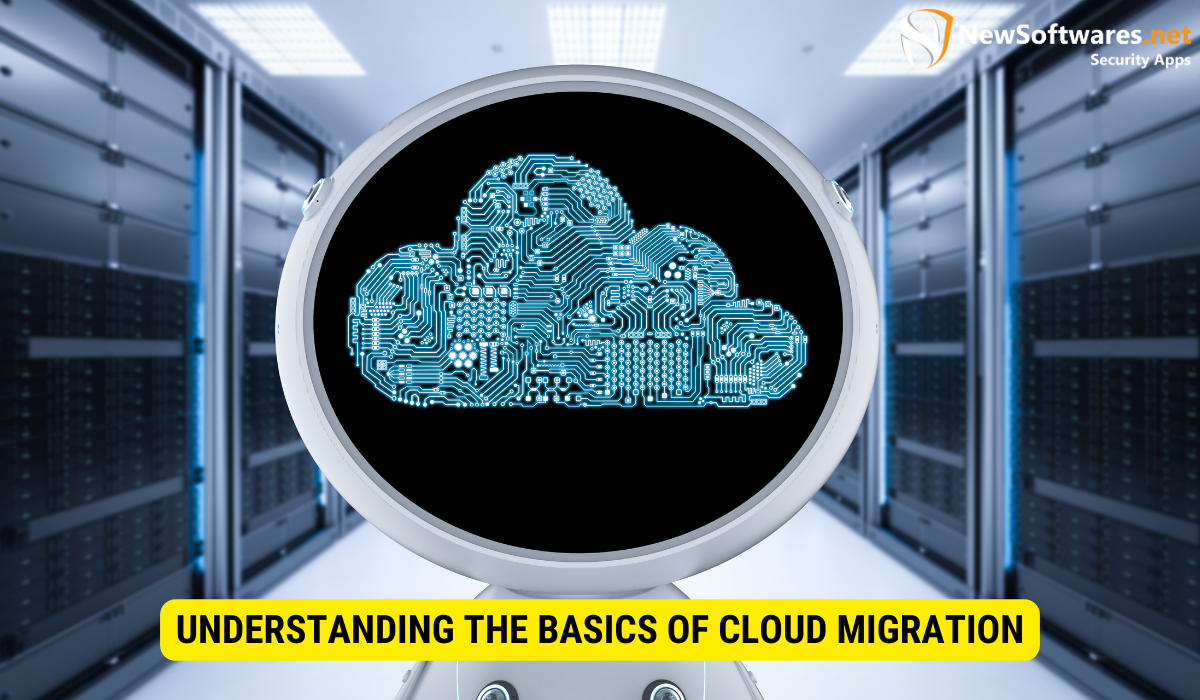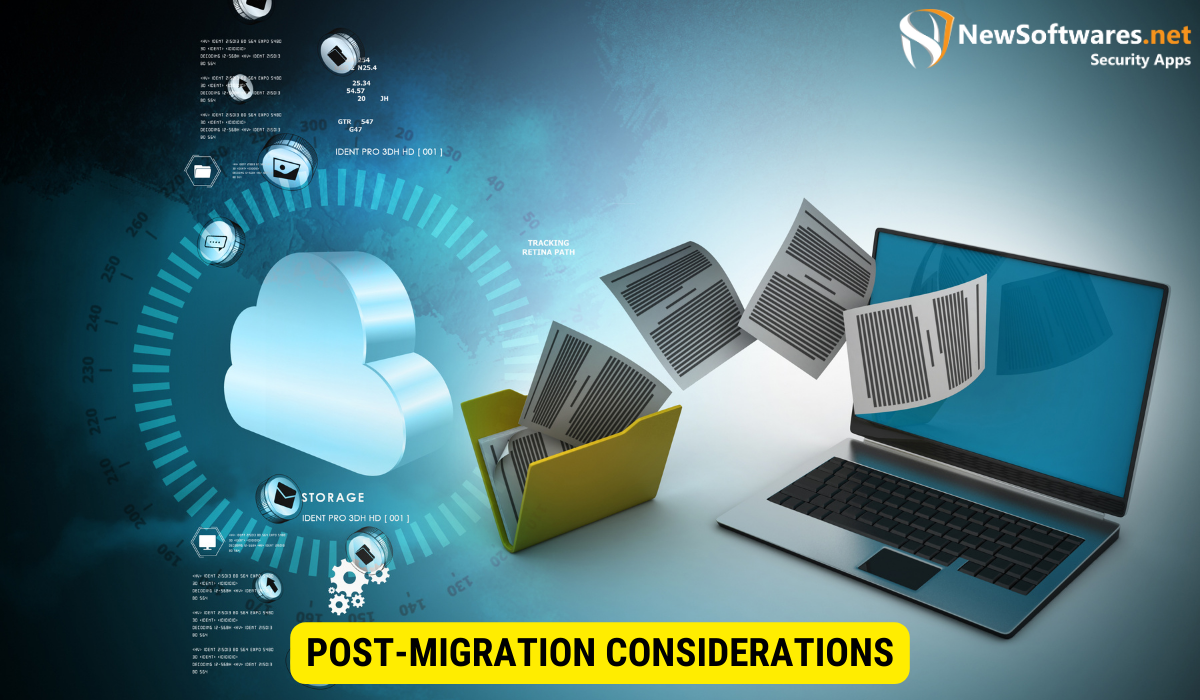Understanding the Basics of Cloud Migration

What is Cloud Migration?
Cloud migration refers to the process of moving your company’s data, applications, and systems from on-premises infrastructure to cloud-based services. It involves transferring and reorganizing your resources to take advantage of the benefits offered by the cloud.
When considering cloud migration, it is important to understand the various types of cloud services available. These include Infrastructure as a Service (IaaS), Platform as a Service (PaaS), and Software as a Service (SaaS). Each type offers different levels of control and management, allowing you to choose the option that best suits your organization’s needs.
Why is Secure Cloud Migration Important?
Secure cloud migration is crucial because it ensures the confidentiality, integrity, and availability of your data throughout the migration process. By implementing robust security measures, you can protect your sensitive information from unauthorized access, data breaches, and other potential risks.
One important aspect of secure cloud migration is data encryption. Encrypting your data before transferring it to the cloud ensures that even if it is intercepted, it remains unreadable to unauthorized individuals. Additionally, implementing multi-factor authentication and access controls helps prevent unauthorized access to your cloud resources.
The Risks Involved in Cloud Migration
While cloud migration offers numerous benefits, it’s important to be aware of the risks involved. These risks include data loss, potential downtime, data breaches, and compliance issues. However, by following best practices and taking appropriate security measures, you can mitigate these risks effectively.
One of the main concerns during cloud migration is the possibility of data loss. It is crucial to have a reliable backup strategy in place to ensure that your data is protected in case of any unforeseen events. Regularly backing up your data and testing the restoration process helps minimize the risk of permanent data loss.
In addition to data loss, potential downtime is another risk to consider. During the migration process, there may be instances where your systems or applications are temporarily unavailable. It is important to plan for these potential disruptions and communicate with your stakeholders to minimize any negative impact on your business operations.
Data breaches are also a significant concern when migrating to the cloud. It is essential to choose a reputable cloud service provider that prioritizes security and has robust measures in place to protect your data. Regularly monitoring and auditing your cloud environment can help detect any suspicious activities and prevent potential breaches.
Finally, compliance issues can arise during cloud migration, especially if your organization operates in a regulated industry. It is important to ensure that your cloud service provider complies with relevant regulations and industry standards. Conducting thorough due diligence and understanding the compliance requirements can help you avoid any legal or regulatory complications.
Preparing for Cloud Migration
Evaluating Your Current Infrastructure
Prior to migration, it’s crucial to assess your current infrastructure, including hardware, software, and network capabilities. This evaluation helps identify any potential compatibility issues and ensures a seamless transition to the cloud.
During the evaluation process, it is important to take into account the age and condition of your hardware. Older hardware may not have the necessary processing power or memory to handle the demands of cloud computing. Additionally, compatibility issues may arise if your software is not up to date or if it relies on outdated protocols.
Furthermore, assessing your network capabilities is essential to determine if your current network infrastructure can support the increased traffic and bandwidth requirements that come with cloud migration. It is important to consider factors such as network speed, latency, and reliability to ensure a smooth transition.
Identifying Data for Migration
Determine which data and applications are suitable for migration. Categorize them based on sensitivity, criticality, and regulatory requirements. This step enables you to prioritize the migration process and apply appropriate security controls to safeguard sensitive data.
When identifying data for migration, it is important to consider the sensitivity of the information. Some data may be subject to strict regulatory requirements, such as personally identifiable information (PII) or financial data. Ensuring compliance with these regulations is crucial to avoid any legal or security issues.
Additionally, assessing the criticality of data and applications helps prioritize the migration process. Critical applications or data that are essential for day-to-day operations should be given priority to minimize any disruption to business processes.
Choosing the Right Cloud Service Provider
Selecting the right cloud service provider is pivotal to the success of your migration. Consider factors such as security certifications, data protection measures, compliance adherence, scalability, and customer support when evaluating different providers.
When evaluating cloud service providers, it is important to ensure that they have the necessary security certifications to handle your data. Look for providers that comply with industry standards such as ISO 27001 or SOC 2, as these certifications demonstrate a commitment to data security.
Data protection measures are also crucial when selecting a cloud service provider. Look for providers that offer encryption at rest and in transit, as well as robust access controls to protect your data from unauthorized access.
Scalability is another important factor to consider. As your business grows, you need a cloud service provider that can accommodate your increasing demands for storage and computing resources. Ensure that the provider offers flexible scaling options to meet your future needs.
Lastly, consider the level of customer support provided by the cloud service provider. In case of any issues or concerns, it is important to have a reliable support system in place to address them promptly and efficiently.
The Process of Secure Cloud Migration
Planning Your Migration Strategy
Start by defining your migration objectives, timeline, and budget. This is a crucial step in ensuring a successful and efficient cloud migration process. Take the time to carefully evaluate your current infrastructure and identify the specific reasons for migrating to the cloud. Are you looking to reduce costs, improve scalability, or enhance data security? By clearly defining your objectives, you can align your migration strategy with your overall business goals.
Once you have defined your objectives, it’s time to develop a step-by-step plan. This plan should include resource allocation, risk assessment, and contingency measures. Consider the different stages of the migration process, such as data transfer, application migration, and infrastructure setup. By breaking down the migration into smaller, manageable tasks, you can ensure a smooth and secure transition to the cloud.
Implementing Security Measures
Before embarking on the migration process, it is crucial to implement robust security measures to safeguard your data. The security of your data should be a top priority throughout the entire migration process. This includes encryption, access control, multi-factor authentication, and regular security audits.
Encryption is essential for protecting your data during transit and storage in the cloud. By encrypting your data, you can ensure that even if it is intercepted, it will be unreadable without the encryption key. Access control is another vital security measure that allows you to define who has access to your data and what actions they can perform. Implementing multi-factor authentication adds an extra layer of security by requiring users to provide multiple forms of verification, such as a password and a unique code sent to their mobile device.
In addition to these security measures, regular security audits should be conducted to identify any vulnerabilities or weaknesses in your cloud infrastructure. These audits help you stay proactive in addressing potential security risks and ensure that your data remains protected.
Executing the Migration
Once you have planned and implemented the necessary security measures, it’s time to execute the migration. Following your defined plan is crucial to ensure a successful migration process. This includes transferring your data to the cloud, migrating your applications, and setting up the necessary infrastructure.
Before fully committing to the migration, it is essential to test the migration process to ensure its success. This can involve migrating a small subset of your data or running test applications in the cloud environment. By conducting thorough testing, you can identify any potential issues or bottlenecks and address them before migrating your entire infrastructure.
Backup your data regularly during the migration process to prevent any potential loss. This ensures that even if something goes wrong during the migration, you have a backup copy of your data that can be easily restored. Regular communication with your team and cloud service provider is also crucial during this phase. It allows you to address any issues or concerns that may arise promptly and ensure a smooth transition to the cloud.
Post-Migration Considerations

Monitoring and Managing Your Cloud Environment
After migration, it’s crucial to monitor and manage your cloud environment. Implement monitoring tools to track performance, availability, and security. Regularly assess your infrastructure to identify and resolve any issues promptly.
Ensuring Ongoing Security
Maintain the security of your cloud environment by regularly updating security patches, implementing robust access controls, and educating your employees about best practices. Conduct periodic security assessments to identify and address potential vulnerabilities.
Optimizing Cloud Performance
To optimize your cloud performance, regularly assess your infrastructure, workload requirements, and usage patterns. Optimize resource utilization, scale resources when needed, and leverage automation tools to improve efficiency and cost-effectiveness.
Key Takeaways
- Cloud migration involves transferring your company’s data, applications, and systems to the cloud.
- Secure cloud migration ensures the confidentiality, integrity, and availability of your data throughout the process.
- Prioritize evaluating your current infrastructure, identifying data for migration, and selecting a reliable cloud service provider.
- Plan your migration strategy, implement security measures, and execute the migration process accordingly.
- After migration, focus on monitoring and managing your cloud environment, ensuring ongoing security, and optimizing cloud performance.
FAQs
Is cloud migration suitable for all types of businesses?
Yes, cloud migration is beneficial for businesses of all sizes and industries. However, it’s important to evaluate your specific requirements and assess the suitability of cloud services for your organization.
How long does the cloud migration process usually take?
The duration of the cloud migration process varies depending on factors such as the size and complexity of your infrastructure, data volume, and the chosen migration strategy. It can take a few weeks to several months to complete the migration successfully.
What are the key security measures I should implement during cloud migration?
Some essential security measures include encryption of data in transit and at rest, strong access controls, regular security audits, and employee awareness training on cybersecurity best practices.
How can I ensure the ongoing security of my cloud environment?
To ensure ongoing security, regularly update security patches, enforce strong access management, implement continuous monitoring and incident response mechanisms, and conduct regular security assessments.
How can I optimize cloud performance?
Optimize cloud performance by regularly assessing your infrastructure, workload requirements, and usage patterns. Employ scaling mechanisms, leverage automation tools, and optimize resource utilization to improve performance and cost-effectiveness.
Conclusion
Secure cloud migration is a critical process that enables businesses to leverage the flexibility, scalability, and cost-efficiency offered by cloud services. By understanding the basics of cloud migration, preparing diligently, and following a systematic approach, you can safely transfer your company’s data to the cloud. However, it’s crucial to implement robust security measures, monitor and manage your cloud environment, and optimize performance to ensure the ongoing success of your cloud migration journey.
